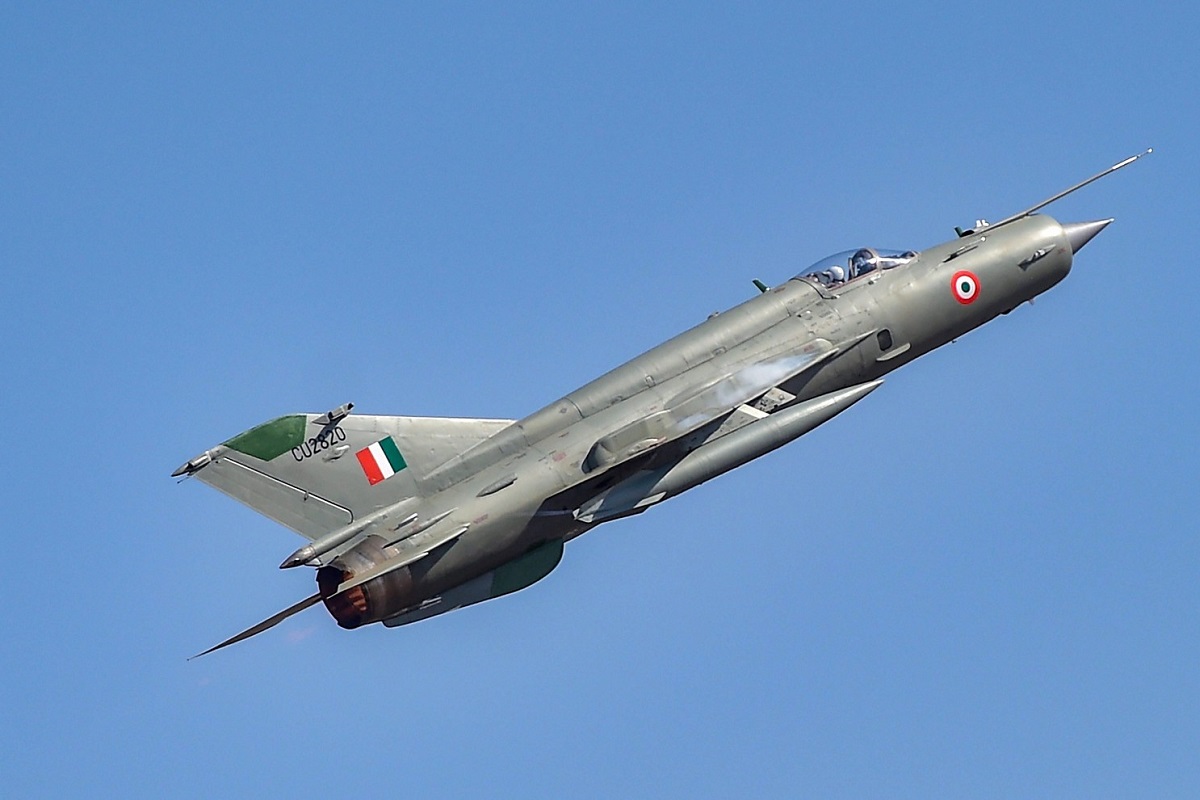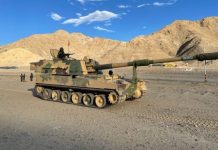Countdown has begun for the phase-out of the legendary Soviet-vintage MiG-21 Bis (Bisons) as the Indian Air Force (IAF) retired one of its three remaining squadrons of war jets. Another Russian-origin fighter aircraft, Su-30MKI ‘Flankers,’ will be the replacement aircraft for the Number 4 Squadron of the IAF.
Chinese Spy Agency Claims ‘Eliminating’ Hundreds Of Espionage Hubs Providing Real-Time Data
Now, the IAF is left with two more squadrons (Squadron 3 and Squadron 23) of the upgraded MiG-21s, the lightweight Soviet ‘rocketship.’ The IAF plans to phase out these vintage supersonic jets by next year.
“The MiG-21 is like a rocket with small wings to keep it in the air. It was designed to shoot down airplanes like the U-2 spy planes. Its dynamic thrust goes up to 9,900 kg; it can practically accelerate in a vertical climb. In seconds, it reaches its business altitude,” Group Captain MJ Vinod told the EurAsian Times. He was in the Oorials between 1992-1997.
“Whether the remaining squadrons will be converted to other aircraft or they will be number-plated will depend on the availability of new aircraft,” an IAF official told the EurAsian Times. The indigenously built Light Combat Aircraft (LCA) Tejas is expected to fill the gap created by the phasing out of the legendary fighter jets that once formed the backbone of the IAF.
The Number 4 squadron of the IAF has operated the MiG-21s since 1966. It is presently working from Uttarlai air base in Rajasthan. Called ‘Oorials,’ the unit has the most extended continuous service in the IAF.
“Marking the end of an era, the MiG-21 Bison aircraft were seen for the last time in the skies of Uttarlai in Barmer district of Rajasthan. The MiG-21 Bison flew alongside the Su-30 MKI to mark the occasion,” the spokesperson of the Gandhinagar-based South Western Air Command wrote on X on Monday. The Bison is IAF’s most advanced MiG-21 variant.
The No. 4 Squadron was formed at Peshawar on Feb 1, 1942, under the command of Sqn Ldr HU ‘Bulbul’ Khan. It was the third IAF Squadron to be equipped with the Westland Lysander Army Co-operation aircraft, and it had taken part in combat since World War II.

“I did my training in the Kiran (an Indian version of the British Jet Provost) Mk I and Mk II; by the time I came to fly the MiG-21 at the MiG Operational Flying Training Unit (MOFTU), I had about 250 hours of jet flying experience. Even then, the first thing that hits you is its speed,” Vinod explained.
“The speed at which things happen. I remember an incident very vividly; one of my course-mates reached the top of a climb even before he had raised his undercarriage. Yeah! I was fortunate to fly MiG-21, especially a Type-77,” the IAF veteran added.
Death Over Dishonor: Oorial’s Motto
It was after the 1965 Indo-Pak war that the ‘Oorial’ was converted to MiG-21 FL. In 1971, they had their moment of glory as ‘Oorials’ were given the honor of flying the first missions over Dacca (Dhaka).
On a subsequent mission, a MiG-21 from No. 4 Squadron was credited with shooting down an F-86 over Dacca — the only air-to-air kill claimed by a MiG-21 Squadron in the East.
On Dec 6, 1971, fighter jets from ‘Oorials’ struck Tezgaon and Kurmitola with runway-busting bombs. A formation of four MiG-21s from the 28th squadron towards Tezgaon, the only operational PAF Airbase in East Pakistan.
Each MiG-21 dropped 500 kg iron bombs directly onto the runway, grounding the Pakistan Air Force (PAF). No PAF Sabre could take off from the cratered runway, and the IAF dominated the skies over East Pakistan within 48 hours.
Close support missions were flown in support of the Army in the XXXIII Corps area and IV Corps area. During one of these missions, one of the MiG-21s was hit by anti-aircraft fire, and its drop tanks got hit. Being critically short on fuel, the aircraft tried to land but overshot on the first attempt to land. There was not enough fuel for the fighter jet to go around, and the pilot had to eject. The first and the only loss to the Squadron during the war.
Over the next few days of the swift war, the squadron flew many sorties, including a two-aircraft mission against the Governor’s House on December 13. Dacca University Campus was hit on December 14 by the Pakistani troops. By the war’s end on December 17, No. 4 Squadron had flown 268 sorties supporting the Army operations.
Safety Concerns Over MiG-21s
During a conversion sortie in 1966, the Commanding Officer of unit Wing Commander NF ‘Stumpy’ Watts, along with Squadron Leader Vijayan, met with an accident. An airman, Corporal Ghosh, was at the scene of the accident and rescued both pilots from the burning aircraft. For his gallantry, Ghosh was awarded the Kirti Chakra, the second-highest peacetime gallantry award. Both the pilots later recovered from their injuries at the hospital.
Most recently, Wing Commander M. Rana and Flight Lieutenant Advitiya Bal from 4 Squadron lost their lives while flying a MiG-21 trainer aircraft near Barmer in 2022.
The IAF chief announced the phase-out plan for MiG-21s on the sidelines of his annual press conference on October 3 this year. On the sidelines, the IAF chief Air Chief Marshal VR Chaudhari told the EurAsian Times that he would remember the aircraft for its raw power. “The aircraft was a pure pleasure to fly. Yes, we faced some issues, but it is a legend that has served us well,” the IAF chief added. The chief has been a MiG-21 pilot himself.
The MiG-21 was a supersonic monster flying faster than twice the speed of sound at Mach 2.25. A vast Tumansky R-11 F-300 engine powered it. It had an R1L radar fitted into its nose cone, which could locate enemy fighters at a range of 20 km.
“Indian MiG-21 has an emergency power reserve (EPR), the second reheat. With EPR, she accelerates much faster. I remember doing a DACT (dissimilar air combat training) with one other fighter (I wouldn’t like to name), and being a superior fighter, he was supposed to demonstrate his acceleration to me; little did he know that at the end of the acceleration run, I matched him. Thanks to the second reheat,” Vinod added.
The MiG-21 is probably one of the best-known Soviet aircraft. It is the most-produced supersonic jet in aviation history. It was designed in response to the Korean War’s need for a short-range interceptor and light strike fighter.
First flown in 1955, the MiG-21 was the first Soviet plane to reach Mach 2. For three decades, variants of the MiG-21 went head-to-head with the F-4 Phantom and other American-made fighters in Cold War-related conflicts worldwide.
Approximately 60 countries across four continents have flown the MiG-21, and it still serves many nations six decades after its maiden flight.
- Ritu Sharma has been a journalist for over a decade, writing on defense, foreign affairs, and nuclear technology.
- She can be reached at ritu.sharma (at) mail.com
- Follow EurAsian Times on Google News




